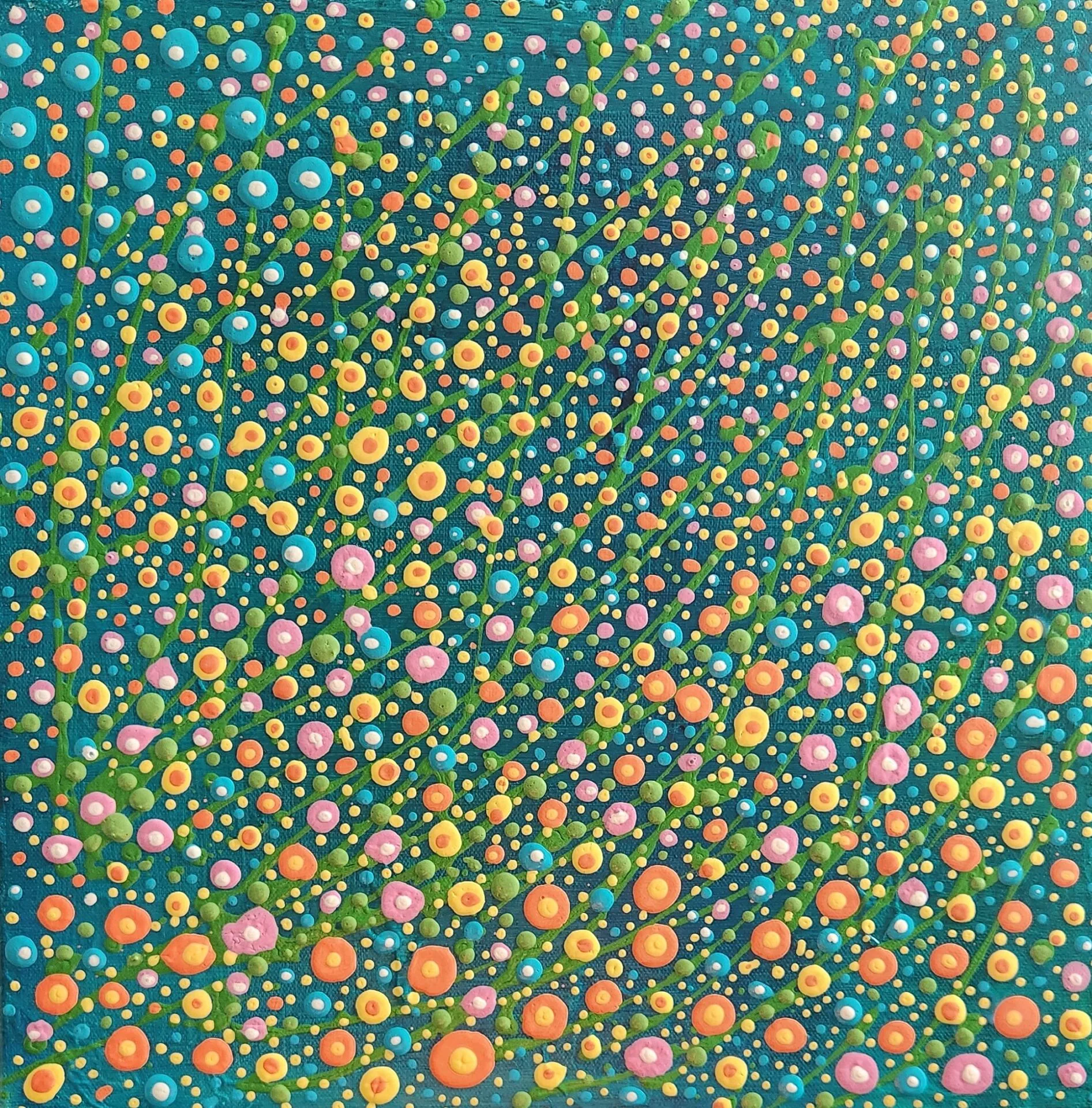
For years, I found a comfortable home in realism. From delicately shading a portrait to capturing the subtle reflection in a glass vase, realism gave me a sense of control. Every line and detail was precise, every stroke of the brush carefully measured. Gradually, though, I felt a restlessness stirring inside me—a desire to let loose, to paint without rules or expectations, to celebrate the accidents and happy coincidences that can occur on the canvas.
The call toward abstraction felt equal parts exciting and terrifying. To go from meticulously rendered details to big, free-flowing shapes and colors meant stepping into the unknown. In realism, I always had a solid reference: a model, a photograph, a scene right in front of me. In abstraction, I had to pull my inspiration from within—emotions, energy, movement. Instead of being guided by what the subject should look like, I had to tune into how the painting felt and let that feeling dictate form.
The Challenges of Letting Go
One of the biggest challenges in making this transition was learning to relinquish control. As a realist painter, my eyes would comb over every detail, aiming for faithful representation. When I began painting abstractly, that constant critical voice in my head—“That shape is off,” “This color is wrong,” “People won’t get it”—got louder. I had to consciously quiet that voice and allow spontaneity to guide the process.
Abstraction demands trust: trust in your instincts, trust that the piece will come together, trust that you, as the artist, know when to stop. It’s a different kind of pressure—where realism might present the challenge of accuracy, abstraction presents the challenge of self-discovery. Often, I’d find myself adding layer upon layer of paint, unsure if the image was finished, only to realize later that the uncertainty was what made the piece interesting.
The Essence of Realism vs. Abstraction
- Realism is often about observation. It captures the external world with fidelity, telling a story through recognizable forms and details. It’s the art of representation, of seeing and replicating.
- Abstraction is about interpretation. It emphasizes emotion, movement, color relationships, and composition over literal depiction. Abstraction lets viewers form their own interpretations, often evoking visceral, personal reactions.
In realism, I used to think: “How can I make this look exactly like that?” In abstraction, the question became: “How can I make this feel like that?” Instead of painting a flower to show how it looks, I might paint an explosion of color to communicate how I experience it—energetically, emotionally, and intuitively.
Coexisting as a Realist and Abstract Artist
There is a tendency to think you must “pick one” style to be consistent as an artist. But I’ve learned that realism and abstraction can—and do—coexist beautifully in my practice. In fact, they often inform each other:
- Finding Balance: When I work in realism, I carry over some of the spontaneity and emotional depth from my abstract process. Instead of rigidly rendering every petal in a still life, I might let the brushstrokes be a bit looser, suggestive, and fluid. This gives my realistic pieces a touch more atmosphere and feeling.
- Deepening Abstract Work: My background in realism provides a strong foundation. Understanding color theory, composition, and value studies enriches my abstract painting because I know how these elements function in traditional representation. That knowledge helps me bend—and sometimes break—those same rules effectively.
- Creative Freedom: Being able to move between realism and abstraction means I’m never stuck. If one approach feels confining, I can shift to the other. If I need a break from constant intuition, I can immerse myself in painting a carefully observed portrait. And when I’m ready to let loose, I dive back into abstract works, letting color and emotion rule.
Embracing the Journey
Letting go of control doesn’t happen overnight. It’s a process of trial, error, and discovery. The biggest lesson I’ve learned from stepping outside the boundaries of realism is that sometimes your best work emerges when you allow for mistakes. In the abstract realm, a “mistake” can become the most compelling part of the composition—it’s an invitation to go in a direction you hadn’t previously considered.
If you’re grappling with this transition—feeling the pull of the unknown but not sure how to handle losing the structure realism provides—give yourself permission to experiment. Work small at first or set aside a series of sketchbook pages to explore. Remember that you’re not abandoning your technical skills; you’re extending and enriching them with an entirely new language of expression.
Ultimately, realism and abstraction exist on a spectrum, and there’s no rule saying you must live on one end or the other. You have every right to dance between the two, allowing each side of your artistic personality to influence and play off the other.
So go ahead—blend the precision of realism with the freedom of abstraction. You may surprise yourself with the dialogue that emerges on the canvas, and in doing so, discover an even deeper creative voice within.
I will be releasing a series of abstract works very soon. Do stay tune!

Leave a Reply